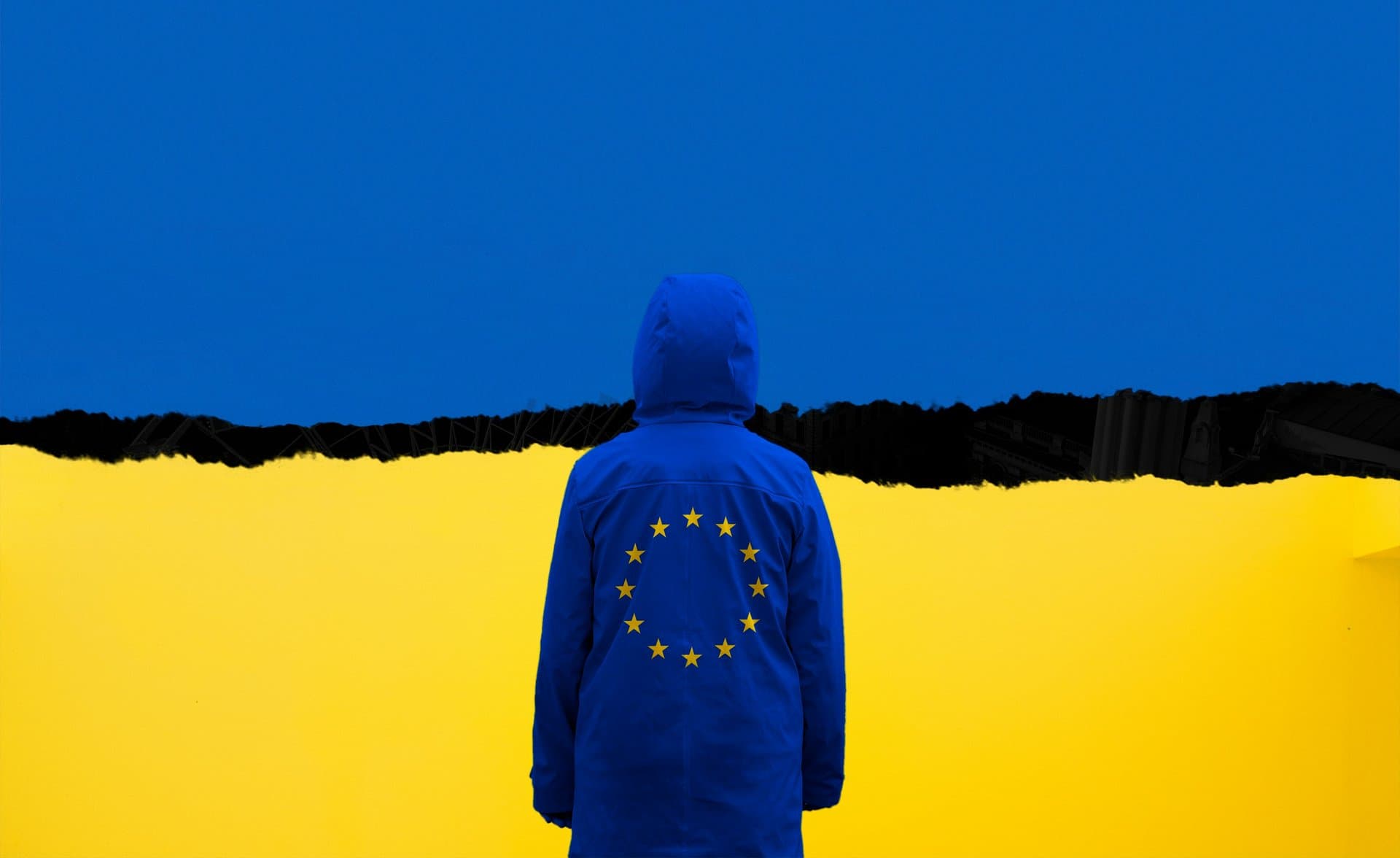European Leaders Join Zelenskiy and Trump to Shape Ukraine’s Future
Discover how European leaders’ meeting with Zelenskiy and Trump aims to secure Ukraine’s defense and influence transatlantic security amid ongoing conflict and shifting U.S. policies.

Key Takeaways
- European leaders unite with Zelenskiy and Trump to discuss Ukraine’s security.
- The meeting focuses on security guarantees, territorial disputes, and ongoing support.
- Trump pushes for a quick peace deal involving territorial concessions.
- European officials remain skeptical about rapid peace and Putin’s intentions.
- The summit signals Europe’s proactive stance amid U.S. political uncertainty.

In a rare and high-stakes gathering, European leaders are set to join Ukrainian President Volodymyr Zelenskiy and former U.S. President Donald Trump in Washington. This meeting arrives amid mounting pressure on Ukraine to accept a swift peace deal with Russia, potentially involving territorial concessions. Key figures including Ursula von der Leyen, Mark Rutte, Alexander Stubb, Friedrich Merz, Keir Starmer, Emmanuel Macron, and Giorgia Meloni will participate, underscoring Europe’s commitment to Ukraine’s defense. The talks will tackle security guarantees, territorial issues, and continued support against Russian aggression. With Trump advocating for a rapid peace and territorial swaps, and European leaders expressing caution, this summit embodies the complex dance of diplomacy, military strategy, and political realities shaping Ukraine’s future.
Uniting European Leaders
Imagine a room where the heavyweights of Europe gather—not just for a routine chat but to stand shoulder to shoulder with Ukraine’s President Zelenskiy and former U.S. President Trump. This isn’t just diplomacy; it’s a statement. Ursula von der Leyen, Mark Rutte, Alexander Stubb, Friedrich Merz, Keir Starmer, Emmanuel Macron, and Giorgia Meloni are all set to join the talks. Their presence signals Europe’s unwavering support for Ukraine amid the ongoing conflict with Russia. It’s a show of solidarity that transcends politics, reflecting the continent’s stake in the outcome.
These leaders are not just guests; they are active players shaping the future of European security. Their agenda includes discussing robust security guarantees for Ukraine, a topic that resonates deeply given the war’s toll and the threat to regional stability. This coalition of the willing is a reminder that Ukraine’s fight is Europe’s fight. The meeting also underscores Europe’s desire to maintain cohesion with the U.S., even as American political winds shift. It’s a diplomatic dance with high stakes, where every word and gesture counts.
Zelenskiy’s Strategic Stand
For President Zelenskiy, this meeting is a lifeline amid mounting pressure. Facing calls from the U.S. for a quick peace deal that might involve ceding territory, Zelenskiy’s resolve shines through. He has consistently rejected giving up all of Donetsk and Luhansk provinces, the heart of the Donbas region, which Russia demands. His visit to the White House marks a return since a tense encounter with Trump in February, signaling a chance to reset and rally support.
Zelenskiy’s approach is both pragmatic and passionate. He seeks to secure continued military and financial aid, vital for Ukraine’s defense against Russian aggression. At the same time, he aims to build personal rapport with Trump and European leaders, hoping to influence their stance on Ukraine’s sovereignty. His message is clear: Ukraine’s future cannot be bargained away lightly. The relief of a funded emergency account is akin to the relief Ukraine seeks—a guarantee that support won’t falter when it’s needed most.
Trump’s Peace Push
Donald Trump enters this summit with a distinct agenda. Fresh from talks with Vladimir Putin, he advocates for a swift peace deal, even if it means Ukraine cedes significant territory in the east. Trump’s stance reflects his transactional view of alliances and his readiness to reshape U.S. foreign policy. He has suggested security guarantees for Ukraine that exclude NATO involvement, a proposal that European leaders view with skepticism.
Trump’s push for rapid negotiations and potential land swaps contrasts sharply with European caution. His indication of organizing a meeting between Putin and Zelenskiy within a week adds urgency. Yet, the Kremlin’s silence on such a summit tempers expectations. Trump’s approach injects unpredictability into the diplomatic mix, raising questions about the future of U.S. support and the broader security architecture. It’s a high-stakes gamble where the prize is peace, but the cost could be territorial concessions and fractured alliances.
Navigating Security Guarantees
Security guarantees are the linchpin of these talks. European leaders and the U.S. are exploring ways to assure Ukraine’s defense without triggering NATO’s collective defense clause, Article 5. This delicate balance aims to provide Kyiv with reassurance akin to a safety net, without escalating tensions further. The discussions include bolstering earlier plans by the UK and France involving reassurance forces, monitoring, and air cover.
However, these guarantees are complex. A NATO-like mechanism is difficult to implement, and the specifics of U.S. contributions remain unclear. The stakes are high: effective security guarantees could deter further Russian aggression and stabilize the region. Conversely, weak or ambiguous commitments risk emboldening Moscow. The talks reflect a nuanced understanding that security isn’t just about weapons—it’s about trust, credibility, and the willingness to stand firm when it counts.
Balancing Risks and Unity
This summit carries risks as well as hopes. A failed or divisive meeting could expose cracks in the Western alliance, emboldening Russia and unsettling Ukraine. Trump’s unpredictable diplomacy might prioritize domestic political gains over lasting peace, challenging European unity. Yet, the gathering also offers a rare chance to reaffirm commitment and clarify intentions.
European leaders’ decision to engage directly with Trump, despite uncertainties, reflects diplomatic realism. They recognize that American electoral politics influence global security and that proactive dialogue is essential. The meeting aims to send a clear message to Moscow: the West remains united in supporting Ukraine. It’s a moment where strategy, solidarity, and skepticism converge, shaping the future of a continent and a conflict that has captured the world’s attention.
Long Story Short
The upcoming meeting between European leaders, Zelenskiy, and Trump is more than a diplomatic formality—it’s a pivotal moment in the ongoing saga of Ukraine’s struggle and transatlantic relations. As Trump presses for a quick peace deal with territorial concessions, European leaders stand firm on robust security guarantees and sustained support. Zelenskiy’s presence signals Ukraine’s determination to keep its sovereignty intact despite immense pressure. The outcome will reverberate across global security landscapes, influencing not just battlefield dynamics but the very fabric of U.S.-Europe cooperation. For Ukraine and its allies, this summit is a test of unity, resolve, and the delicate balance between hope and hard realities. The world watches as these leaders navigate a path where peace, power, and principle collide.